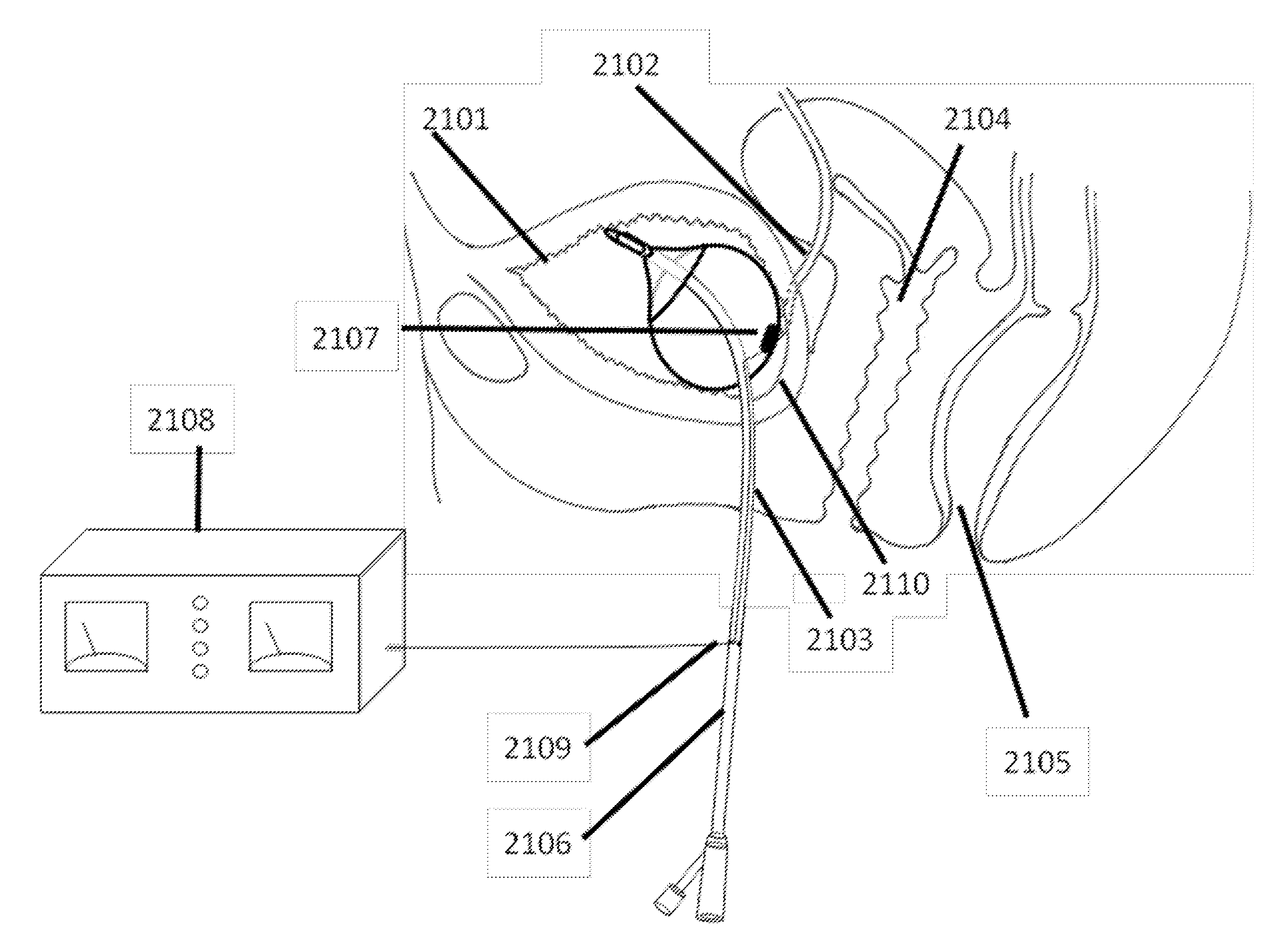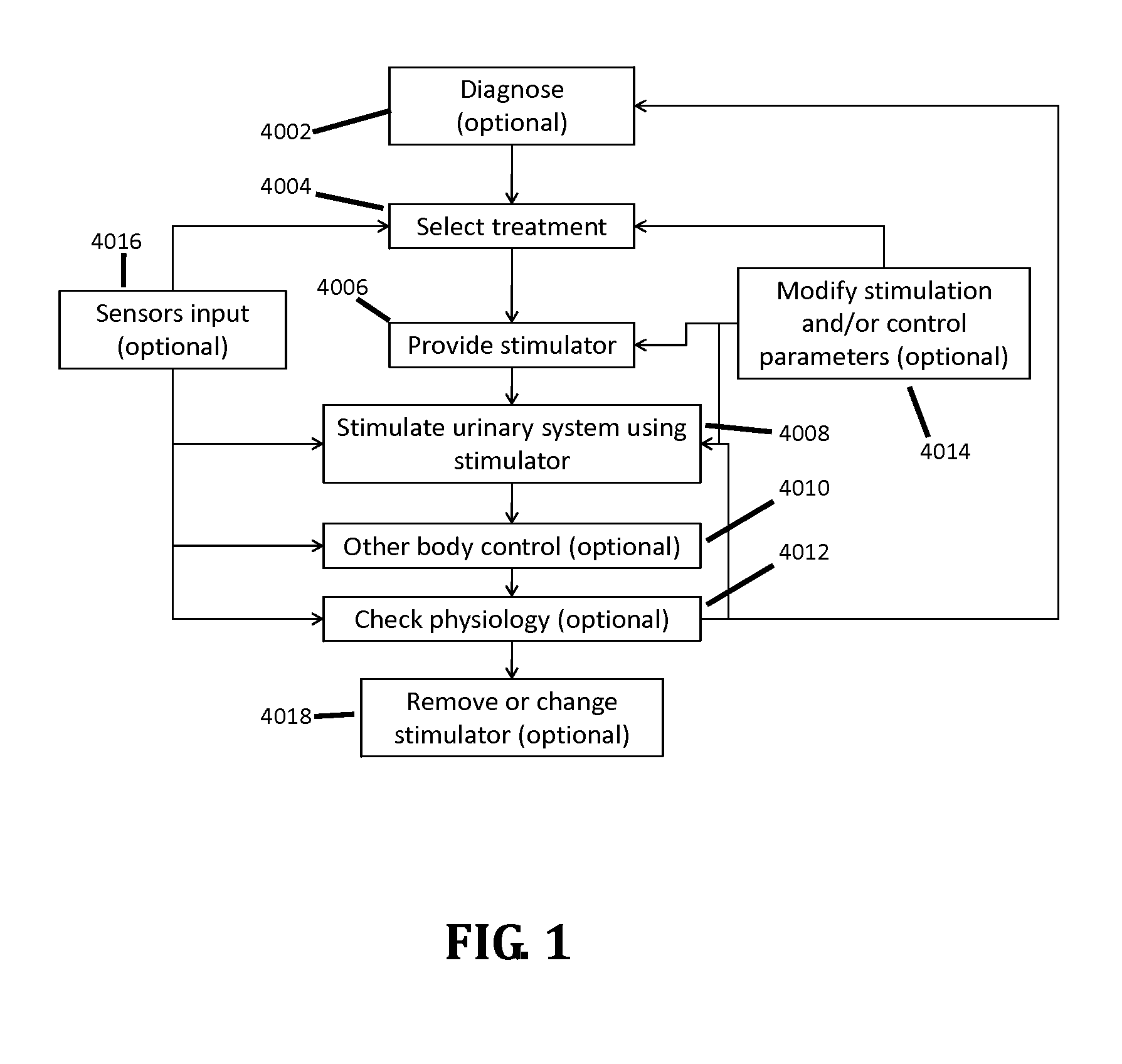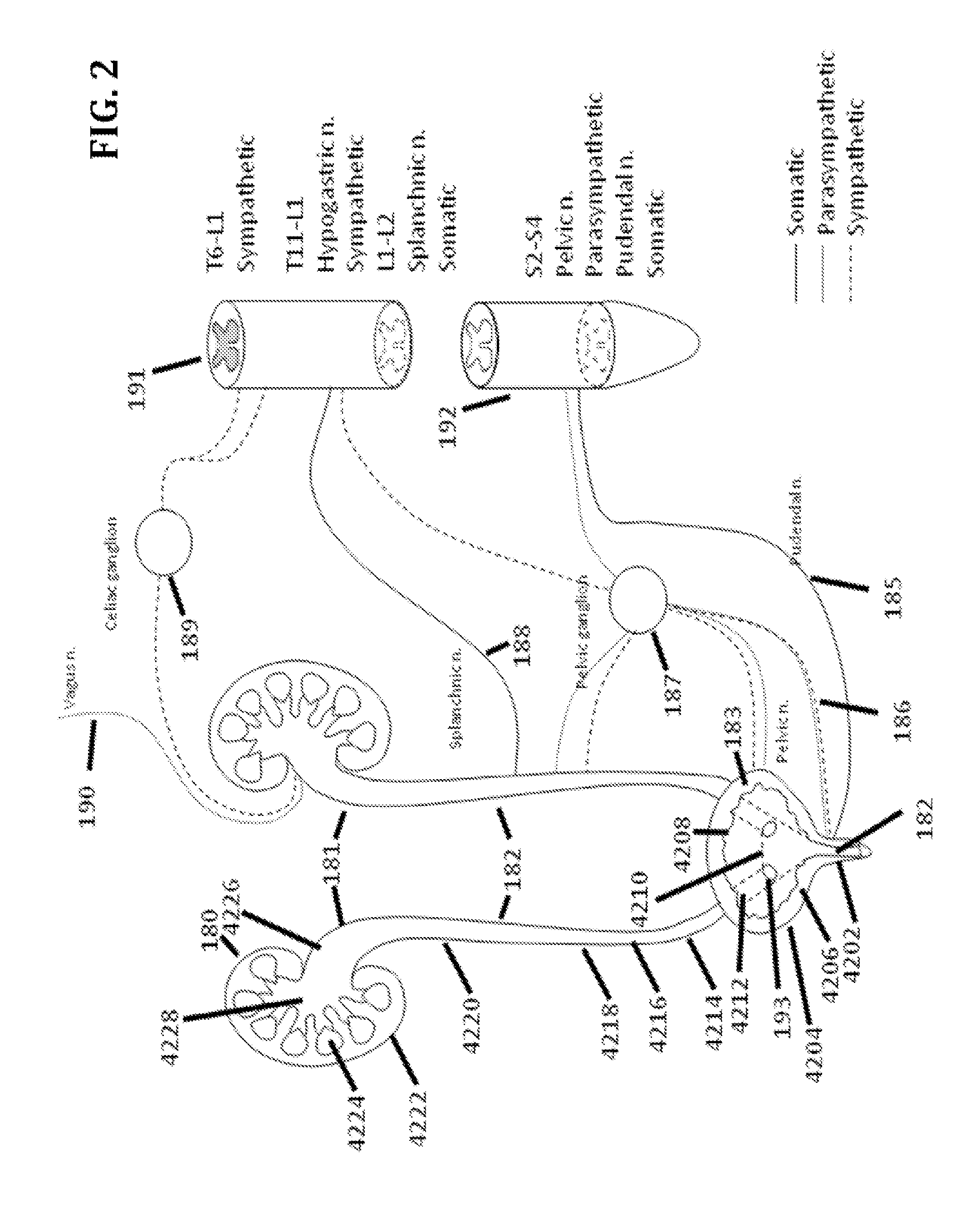Stimulation of the urinary system
a technology stimulation, which is applied in the field of stimulation of the urinary system, can solve the problems of unadvised increase of the dose of the diuretic, inability to remove fluid, and inability to achieve and achieving the effect of reducing the risk of infection
- Summary
- Abstract
- Description
- Claims
- Application Information
AI Technical Summary
Benefits of technology
Problems solved by technology
Method used
Image
Examples
examples
[0828]Reference is now made to the following examples, which together with the above descriptions, illustrate some embodiments of the invention in a non limiting fashion.
example i
Experimental Setup
[0829]The experiments were performed on healthy SD rats that were anesthetized with Inactin. A stimulating electrode, made of two platinum plates (each with area of about 5 mm2) located 2-3 mm apart, was placed under one of the ureters. Typically the electrode was placed about 1 cm from the pelvis. The lower side of the electrode was isolated from the rat's body by a silicone coating. Both ureters were then catheterized and the urine collected. Great care was given to preserve the temperature of the animal and the hydration status; the left femoral vein was catheterized and solution of saline with inulin and para-aminohippuric acid (PAH) was perfused at a constant rate of 3 cc / h.
[0830]Following the procedure the animal was left undisturbed for one hour for an equilibration of the solutes. The experiment began with baseline urine collection, followed by a stimulation session and then by a recovery period. Each collection lasted 30 minutes. In some experiments we abs...
example ii
Acute Results in a Sheep
[0851]Effectiveness of electrical stimulation of the ureter was tested on one sheep that underwent nephrectomy 2 month prior to the current procedure. Anesthesia was induced with a mask and halothane (3-4%) in oxygen, the trachea was intubated, and anesthesia was maintained by ventilating the lungs with halothane (0.5-1%) in a mixture of nitrous oxide and oxygen (3:2). Abdominal cavity was opened by midsagittal incision and the ureter was gently exposed near the kidney. Bipolar stimulating electrode, made from platinum sheets (contact area of about 1 cm2) was placed on the ureter about 10 cm from the kidney the ureter was catheterized and urine collection was performed for 15 minutes. Stimulation of the ureter increased urine flow by 315%, GFR by 550% and RBF 565%.
[0852]FIG. 51 illustrates Urine flow, GFR, and RBF before, during and following ureteral stimulation in a sheep. As can be seen stimulation of the ureter drastically improved all these parameters.
[0...
PUM
 Login to View More
Login to View More Abstract
Description
Claims
Application Information
 Login to View More
Login to View More - R&D
- Intellectual Property
- Life Sciences
- Materials
- Tech Scout
- Unparalleled Data Quality
- Higher Quality Content
- 60% Fewer Hallucinations
Browse by: Latest US Patents, China's latest patents, Technical Efficacy Thesaurus, Application Domain, Technology Topic, Popular Technical Reports.
© 2025 PatSnap. All rights reserved.Legal|Privacy policy|Modern Slavery Act Transparency Statement|Sitemap|About US| Contact US: help@patsnap.com



